Lucerne - City of the Sad Lion, Blue Water, and Snowy White Peaks
![]()
The city of Lucerne (Luzern) stretches along the shore of the western arm of the Vierwaldstattersee (also known as Lake Lucerne and Lake of the Four Forest Cantons). It straddes the River Reuss, that flows from the lake and eventually into the Rhine. The dramatic setting of this town is legendary with the forested slopes and dramatic cliffs rising from the blue water of the lake shore and the peak of Mount Pilatus towering across the water. The trip by train from Bern over steep green hills, through forests and tunnels, over bridges and through small towns was awesome!
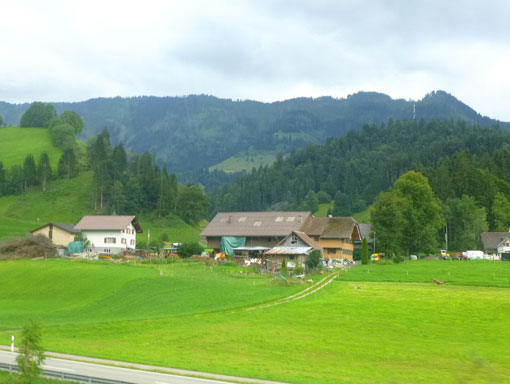
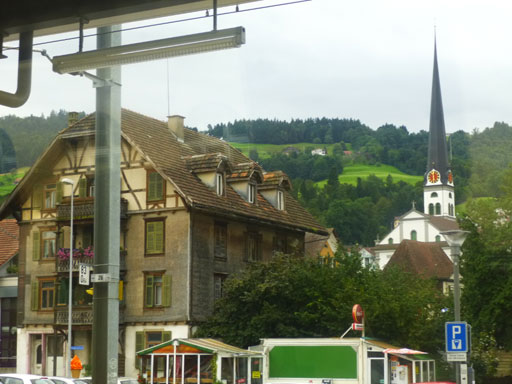
On the morning after we arrived, rain was pouring steadily so clearly this was a good museum day. We selected the Verkehrshaus, the Transport Museum, and boarded a tram to go out to it. Nearly the whole tram-full of folks got off with us! We enjoyed our day, sharing our enjoyment of the trains, including cog railways and cable cars, planes and boats on exhibit with Swiss families. Two of the more engaging elements were a model railway of the approach to the Gotthard Tunnel and a giant satellite map of the country reproduced on the floor.
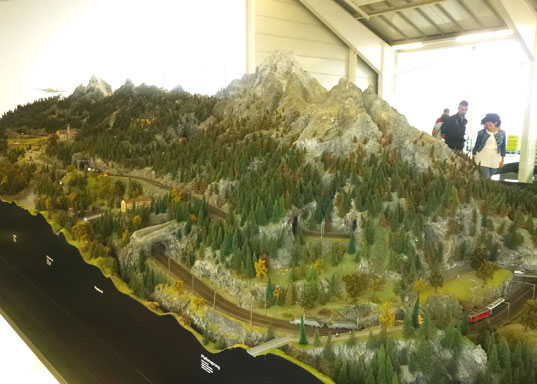
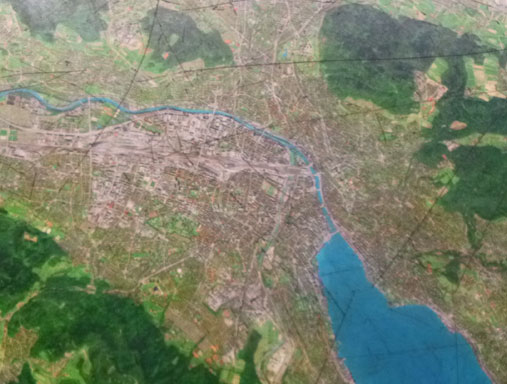
By afternoon, the weather had cleared so we walked along the lake shore past the grand hotels and enjoying views of Mt Pilatus in the distance.
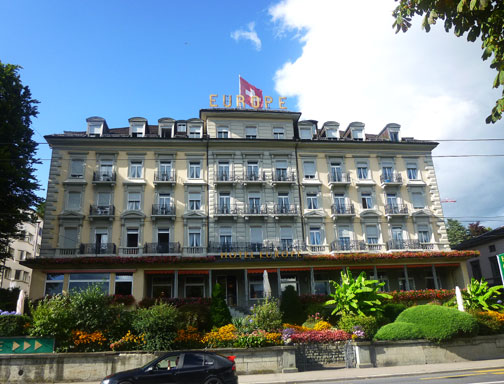
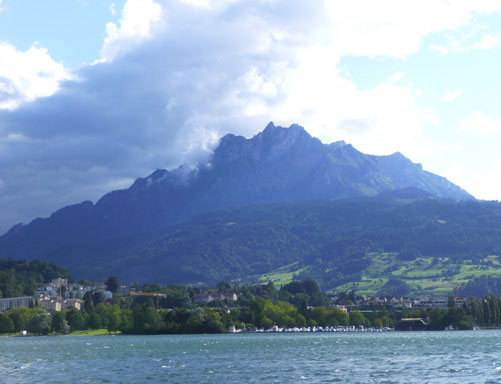
We then strolled through the Old Town, admiring the Kapellbrucke, the 14th century covered bridge with its distinctive Wasserturm in the center. Just downstream was the Spreuerbrucke, another wooden covered bridge. We discovered that there was an old needle dam with a modern hydropower generating plant incorporated into it as well.
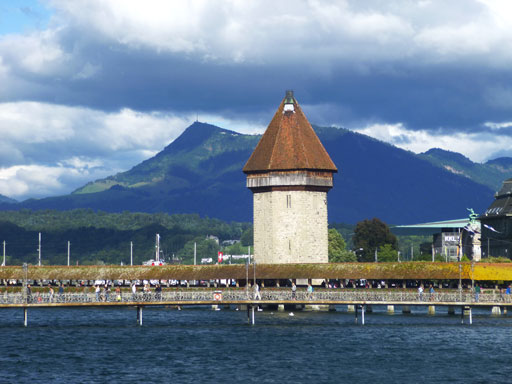
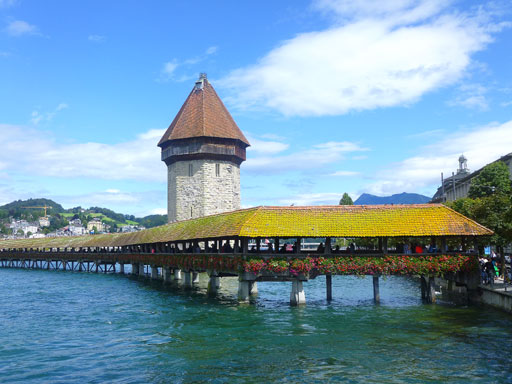
Old Town Lucerne offered more opportunities for strolling through the old squares, admiring the frescoed facades of the houses, some with protruding oriel windows ...
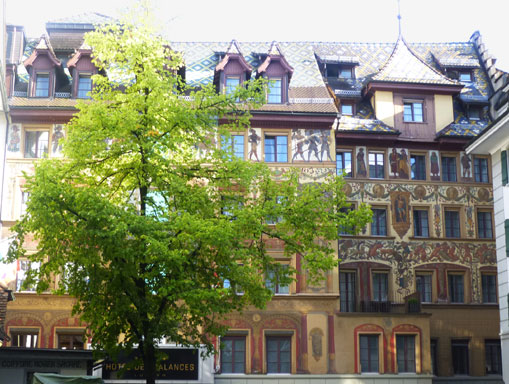
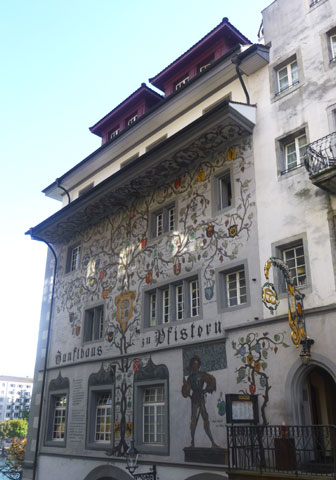
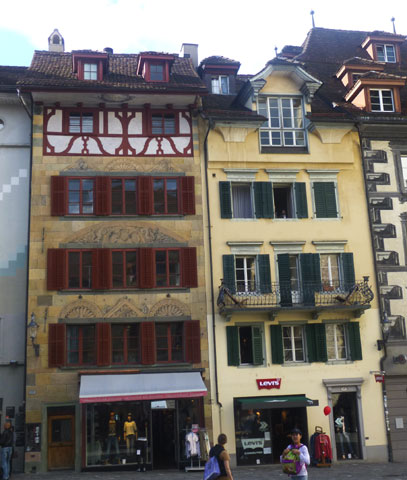
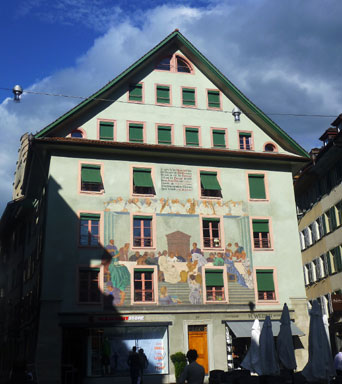
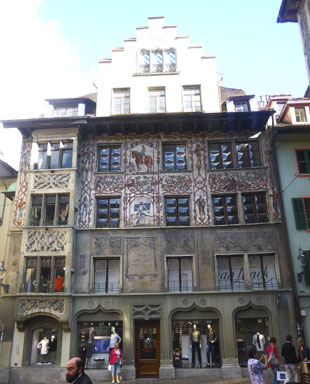
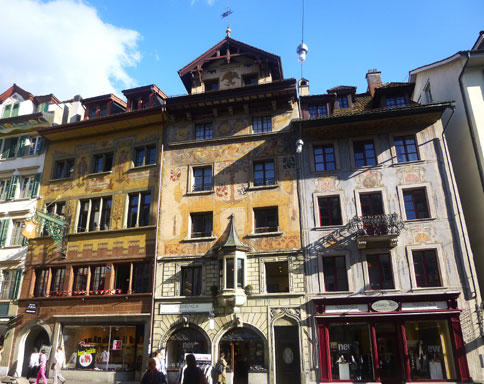
... and the monumental Italian Renaissance Rathaus, town hall, with its incongruous Emmentaller roof.
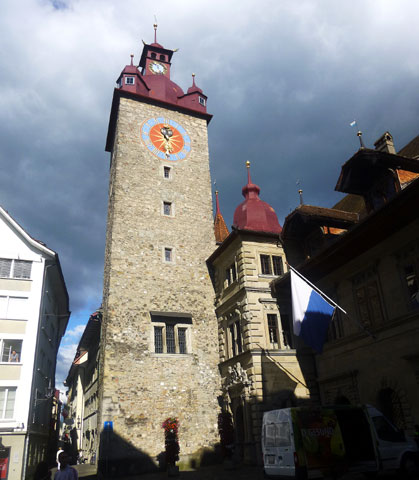
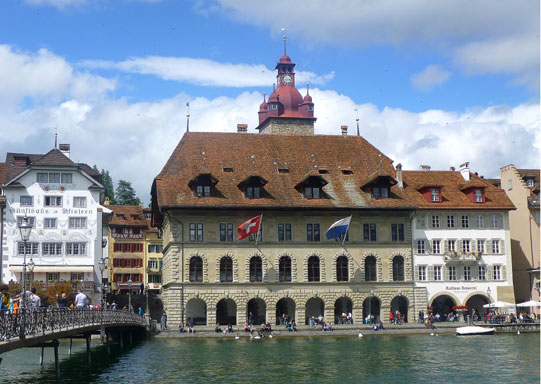
As we explored, we often stopped to admire the carefully crafted fountains much like those found in most all Swiss cities. The fountains have historically provided drinking water for the residents, and now also thirsty travelers.
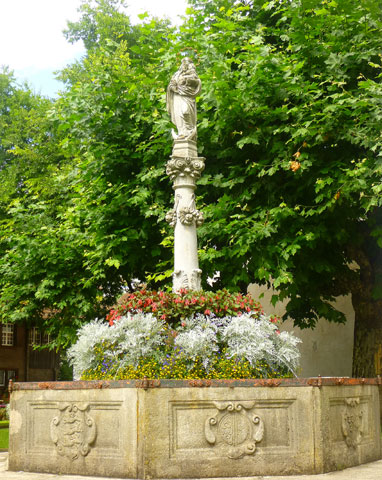
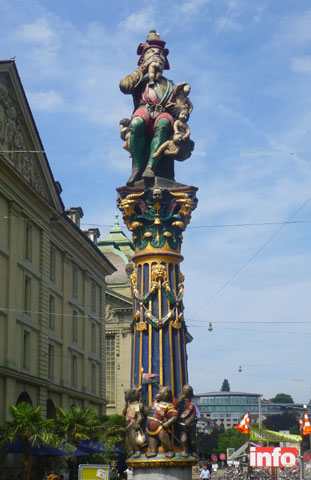
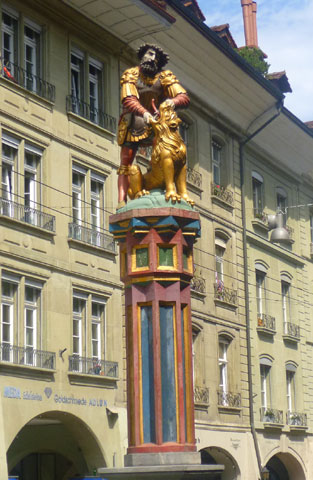
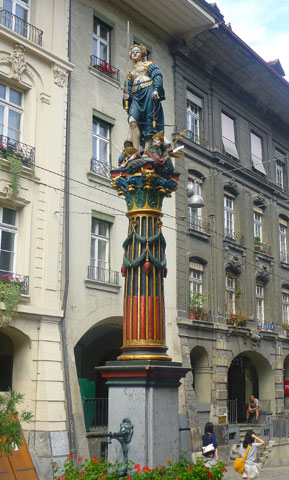
The old walls of Lucerne, carefully preserved on the heights above the old town, offered another great walk with views from the ramparts of the surrounding countryside.
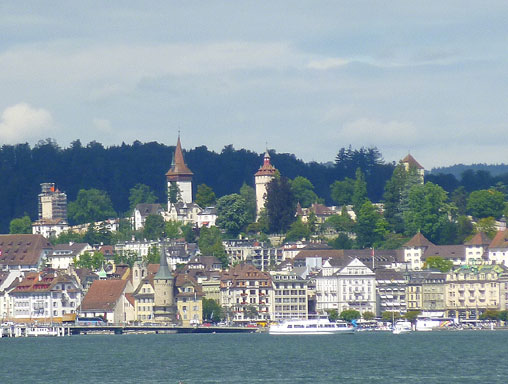
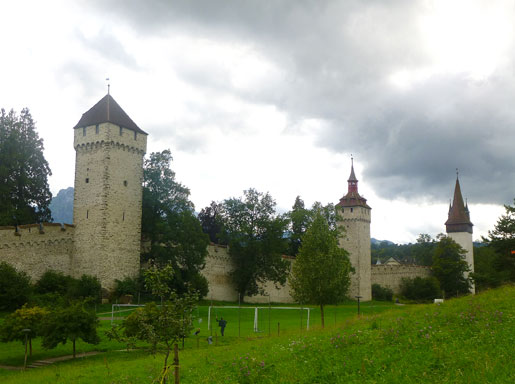
A sunny day enabled us to take a ride on one of the elegant old cruise boats that plied the waters of the lake! The boat cruised by classic lakefront hotels and made stops at small towns all along the way. We admired the steep cliffs along the way.

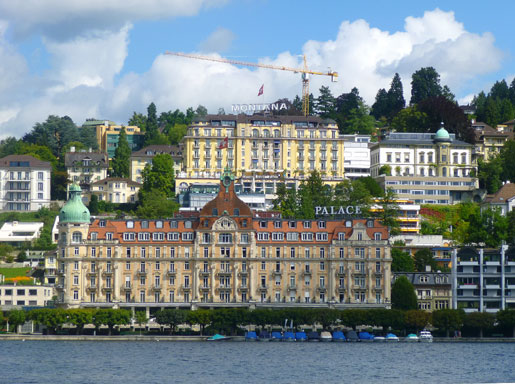
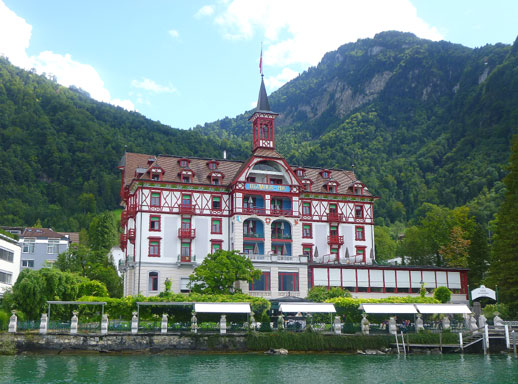
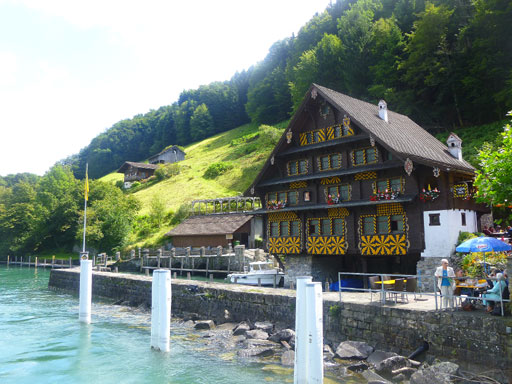
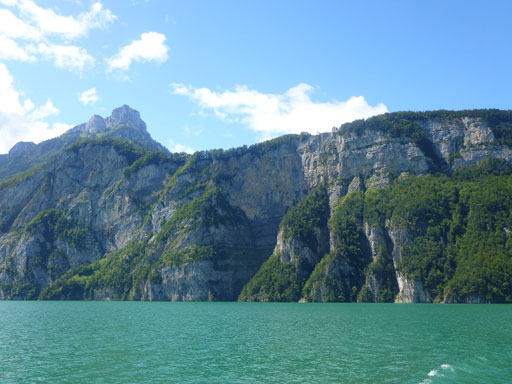
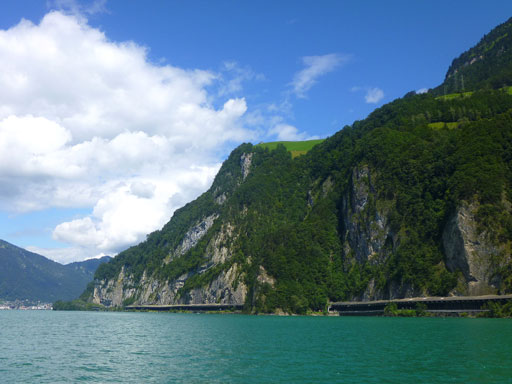
We picked Fluelen for a shore excursion. This small village was amazingly quiet and peaceful. We walked up to the hilltop church and ate a picnic of bread and cheese looking out at the lake with the deep green forested hills beyond the blue water.
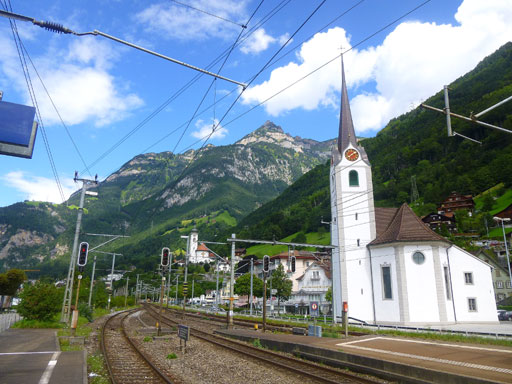
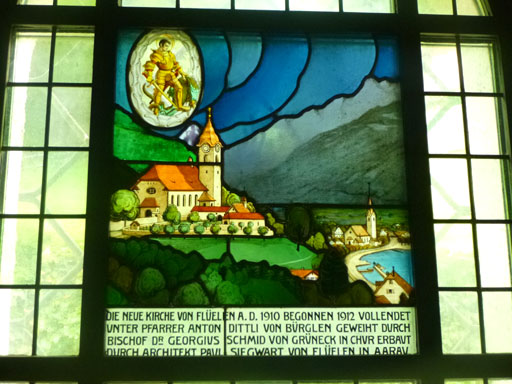
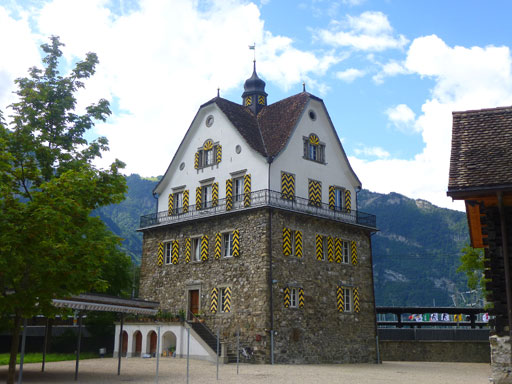
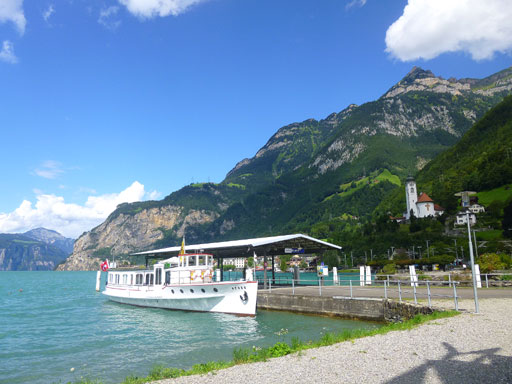
On another rainy morning, we visited the Sammlung Rosengart, a wonderful museum containing a collection of works by Picasso and other 19th and 20th century artists. Alas, no photography was allowed.
Afternoon sunshine offered an opportunity for us to visit the Hofkirche which sits grandly on a hill, its twin towers rising on either side of a Renaissance gable. The Renaissance interior had special pews on the right for important people and less ostentatious (and more comfortable) ones of the left.
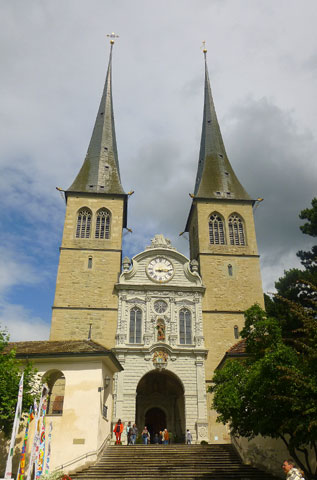
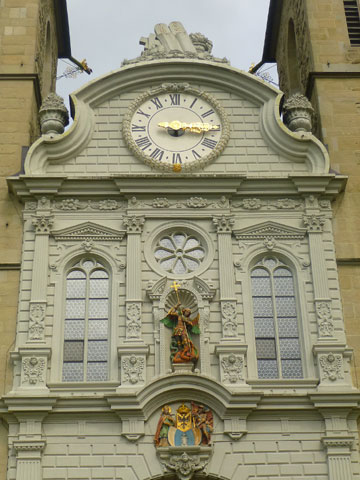
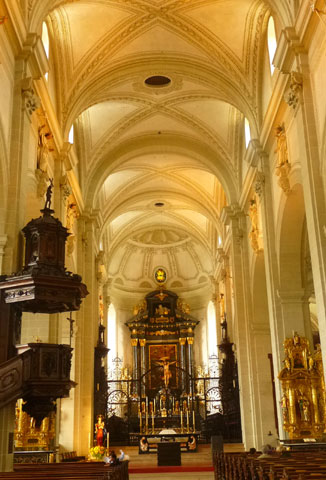
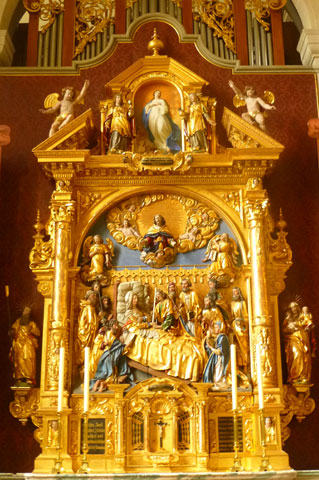
That evening, the famous Lucerne Festival opened and we joined others in the park next to the KKL concert hall to enjoy the opening without buying tickets. The performance was shown on a large screen with big speakers. We settled on a bench for a delightful evening, but then rain began to fall. We huddled under our umbrella for a while but realized that the opening performance was mostly lecture! We gave up and hurried back to the Hofkirche to listen to a splendid organ concert with several talented players! A tasty dinner with Swiss wine in a nearby cafe completed our day. Nomads must learn to change plans as the conditions require.
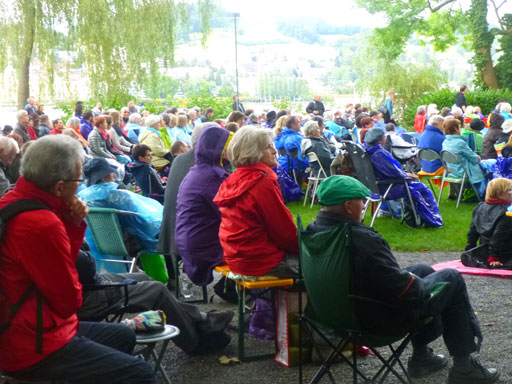
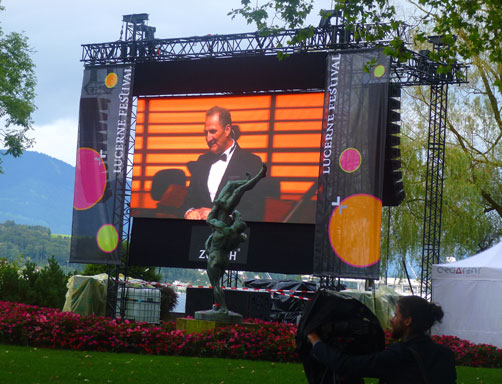
Another famous Lucerne landmark was just uphill from the Hofkirche in a small park. Here, carved into a niche in a cliff was the saddest lion we had ever seen! The lion's side was pierced by a spear and he seemed to be nearly in tears. He was carved to commemorate the 1792 slaughter of the 700 Swiss Guards who were responsible for the lives of the French royalty. When the mob came to attack the king in the Tuilleries, in Paris, these guards were ordered to put down their swords and they obeyed and were killed by the mob. We felt his pain!
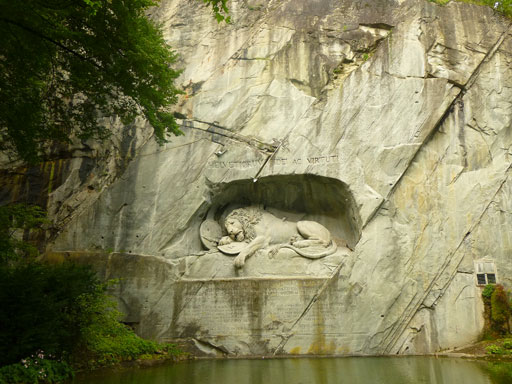
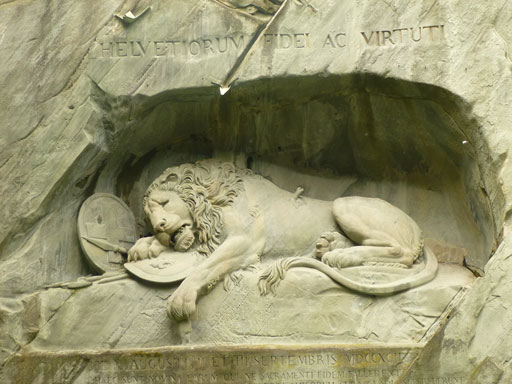
Our greatest adventure in Lucerne was a trip to the summit of Mount Rigi. A multi-modal journey, we began with a cruise on the lake to Vitznau where we boarded a cog railway that climbed steeply up offering amazing panoramas of the lake and surrounding mountains.
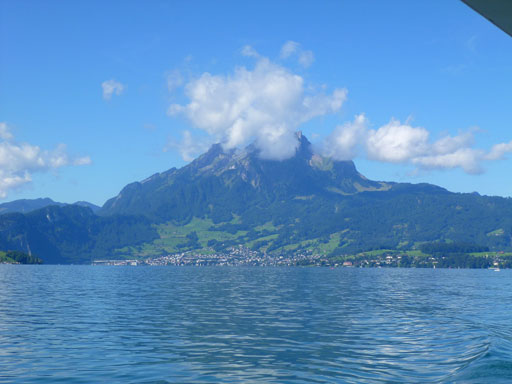
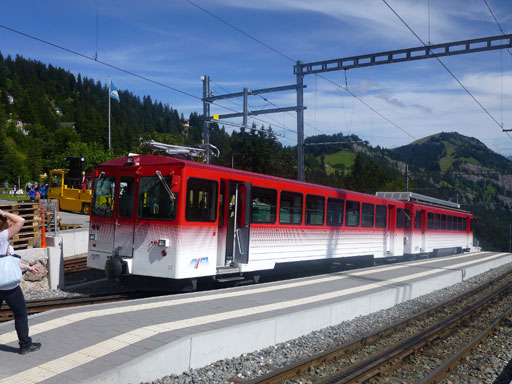
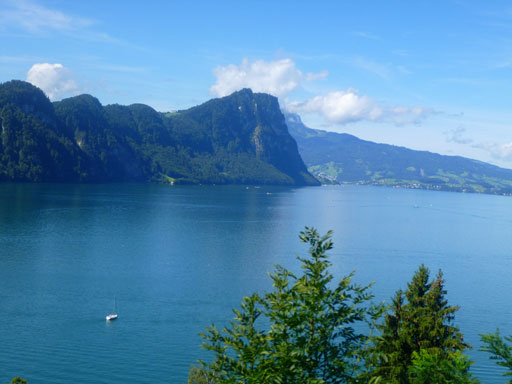
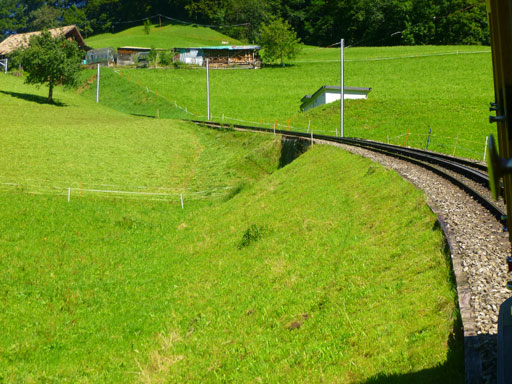
As we climbed higher, we passed Rigi-Kaltbad, a small village along the way, and continued to ascend to the final station just below the summit.
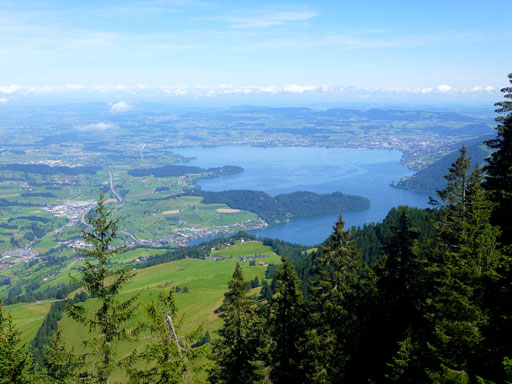
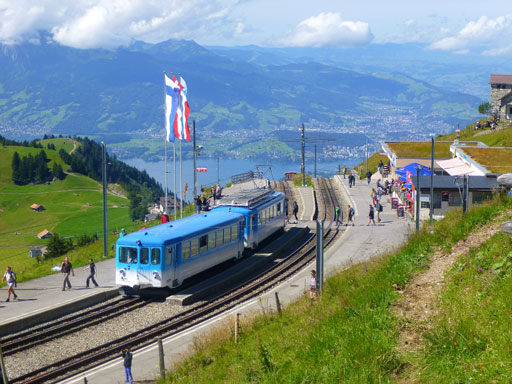
Lots of other folks had the same idea! We joined them to hike to the Kulm (peak) at 1798m. Here, the panorama was of the bright snowy peaks of the highest Alps to the south and in other directions, deep green valleys, more lakes, some villages. So lovely!
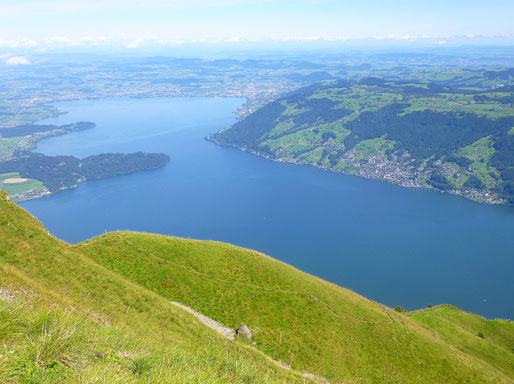
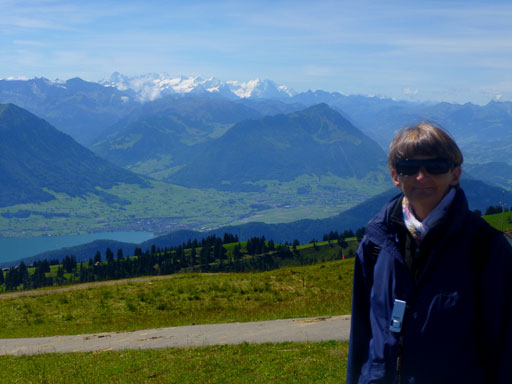
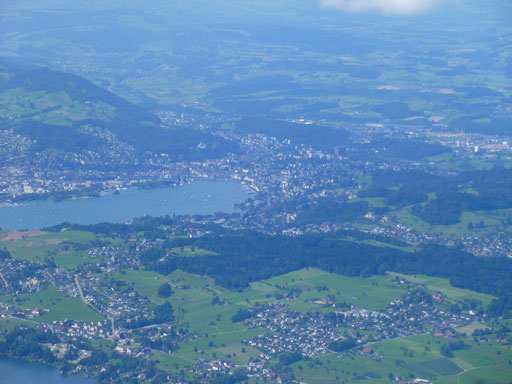
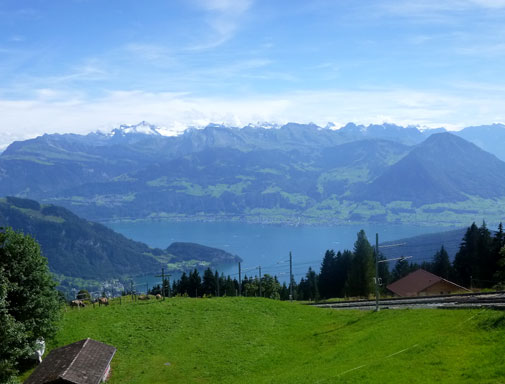
After a snack we returned to Rigi-Kaltbad where we watched as some of the historic cog railway cars passed.
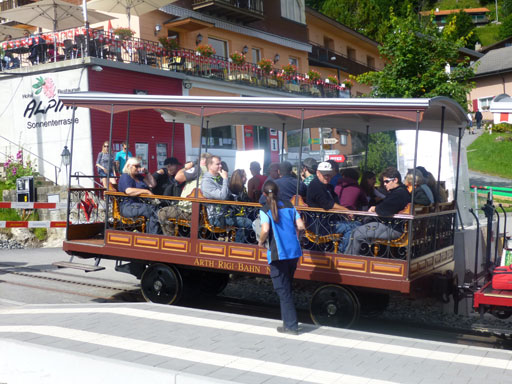
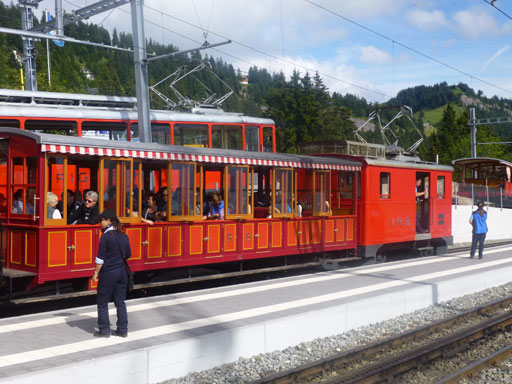
From there, rode a cable car down to Weggis, another charming lakeside village. Here, the temperature was nicely warmer so we sat outside for a yummy meal with lake views. Then the boat arrived to carry us back to Lucerne. What a great day in the Alps!
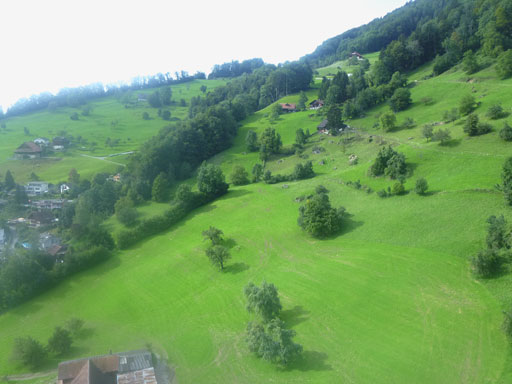
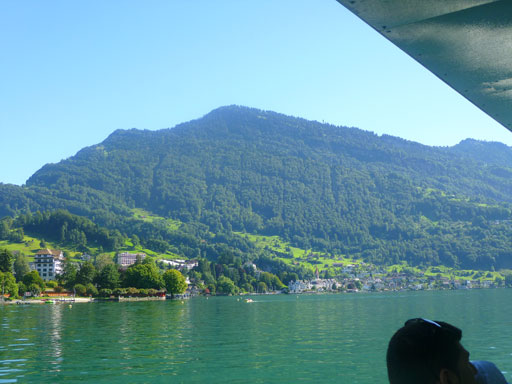
Lucerne was certainly a town with lots to offer and is a highlight for many international visitors to Switzerland! Yet, we did not feel quite comfortable there. While it is certainly very picturesque, we found the city center and old town area to be overly touristy and artificial, perhaps by design to keep the tourists there and preserve the rest for themselves. We never did find the more comfortable 'local neighborhoods' where the real Lucerners lived!
Click here to return to our 'Switzerland and More Time in Brussels' page
Click here to return to our 'Searching the World for People Friendly Cities' page
![]()